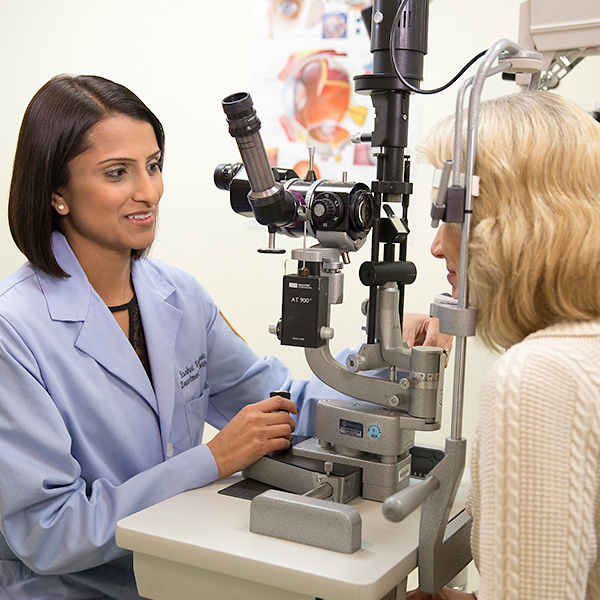Primary Open Angle Glaucoma
Overview and Facts about Primary Open Angle Glaucoma
Primary open angle glaucoma is the most common of the glaucoma conditions. As the condition progresses, your eye pressure increases; however, your cornea doesn’t swell and you remain symptom free. This often results in the condition going undetected, until permanent damage occurs.
Once the optic nerve becomes damaged, you may notice blind spots or loss of vision, especially in your peripheral or side vision.
The damage produced by primary open angle glaucoma is one of the leading preventable causes of blindness. Although treatment can prevent further loss of your vision, once the disease damages your optic nerve, it can’t be reversed.
Signs and Symptoms of Primary Open Angle Glaucoma
Unfortunately, primary open angle glaucoma doesn’t have any early or mid-stage symptoms. It doesn’t cause pain or discomfort, until it’s progressed into damaging the eye and some level of vision loss occurs.
Even though there are no outward signs of this glaucoma condition, there are a few indicators that your doctor may see during an eye examination and testing. Indicators include the open angle of your eye or a thinned optic nerve, elevated eye pressure, or changes on visual field testing.
Causes and Risk Factors of Primary Open Angle Glaucoma
Although the root cause of primary open angle glaucoma is unknown, it’s believed that a malfunction in certain eye cells results in them not being able to carry out their function. It’s also possible that as you age, you have fewer of these cells. A structural defect may also impact your eye’s drainage system.
Even though the cause is unclear, certain risk factors for developing primary open angle glaucoma have been identified and include:
- High intraocular pressure
- Age 50 and above
- African descent
- Family history of glaucoma conditions
- Thin cornea
- Nearsightedness
- Diabetes
- Hypertension (high blood pressure)
Tests and Diagnosis of Primary Open Angle Glaucoma
Because primary open angle glaucoma remains symptomless, regular eye examinations are vital in recognizing and diagnosing the condition before vision loss occurs.
During your eye exam, your doctor may ask about a family history of glaucoma conditions or if you’ve had any trauma to your eye, including other surgical procedures. They also perform multiple tests and measurements, including:
- Visual acuity with an eye chart
- Eye pressure
- Your inner eye
- Your optic nerve
- Corneal thickness
- Angle of your eye
- Neuroimaging
Treatment and Care for Primary Open Angle Glaucoma
Although primary open angle glaucoma is a chronic condition and the damage it creates on your optic nerve can’t be reversed, your doctor can stop its progression with medication, laser, and, occasionally, surgery if necessary.
To lower your eye’s internal pressure, your doctor prescribes eye drops. There are several types of eye drops that can lower the pressure through different functions. Your doctor will determine the best eye drops for your glaucoma condition.
If eye drops aren’t enough to lower the pressure, laser surgery may be recommended. Laser treatments are performed on the eye’s drainage channels. Sometimes two procedures may be needed. When laser surgery fails to result in lower eye pressure, your doctor may recommend other surgical procedures like:
- Cataract surgery
- Microinvasive glaucoma surgery
- Trabeculectomy
- Drainage implant
- Ciliary body ablation

Request an Appointment
Whether you are seeking routine eye care or have a specific vision issue, our team treats a wide range of eye diseases and conditions, including cataracts, glaucoma, macular degeneration and strabismus. Schedule an appointment today.
Schedule a Telehealth Appointment
